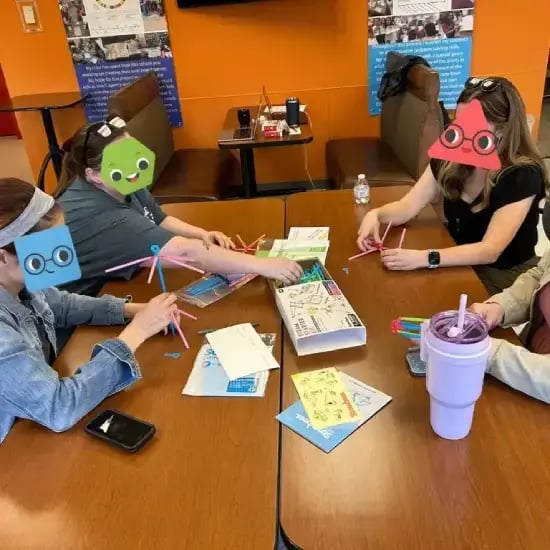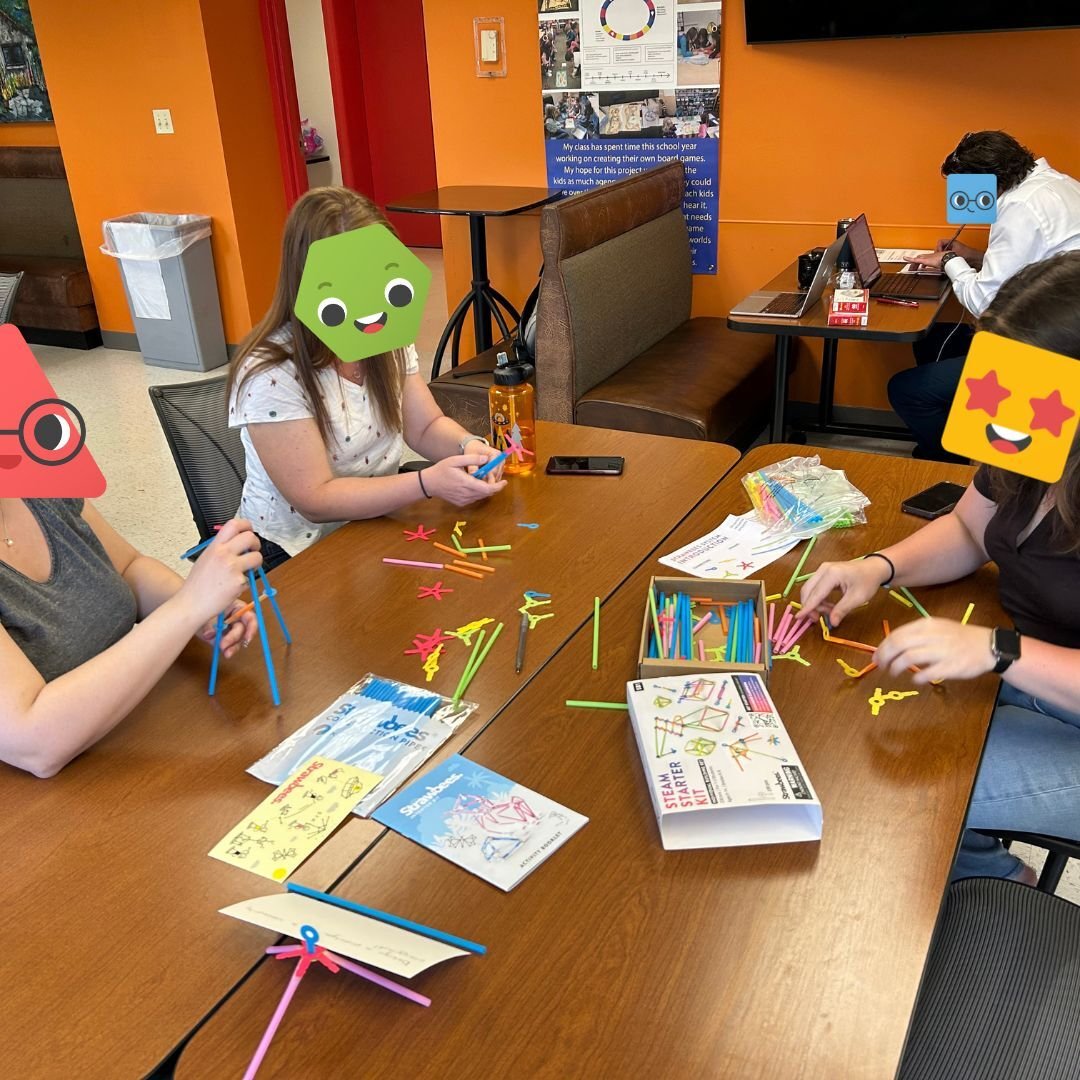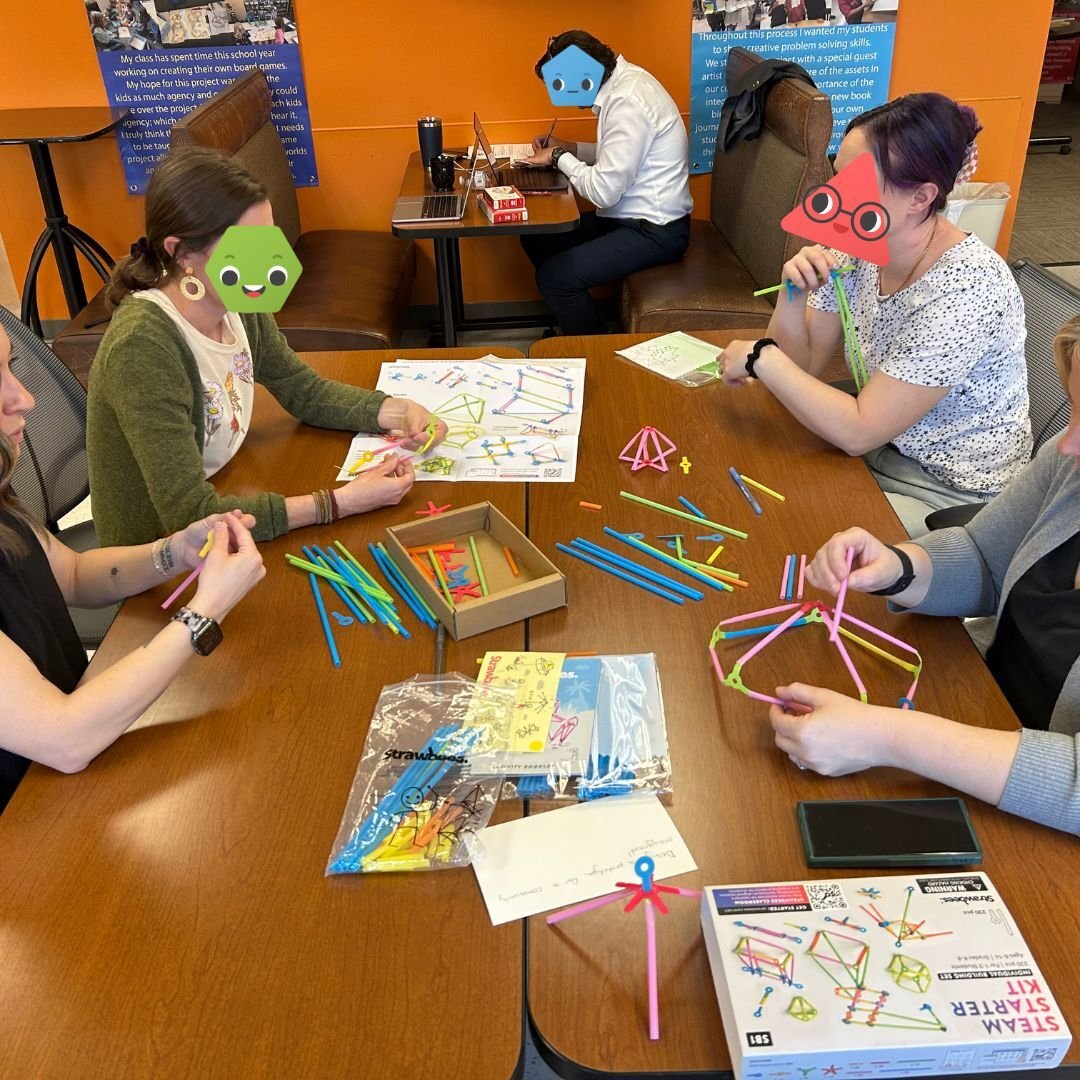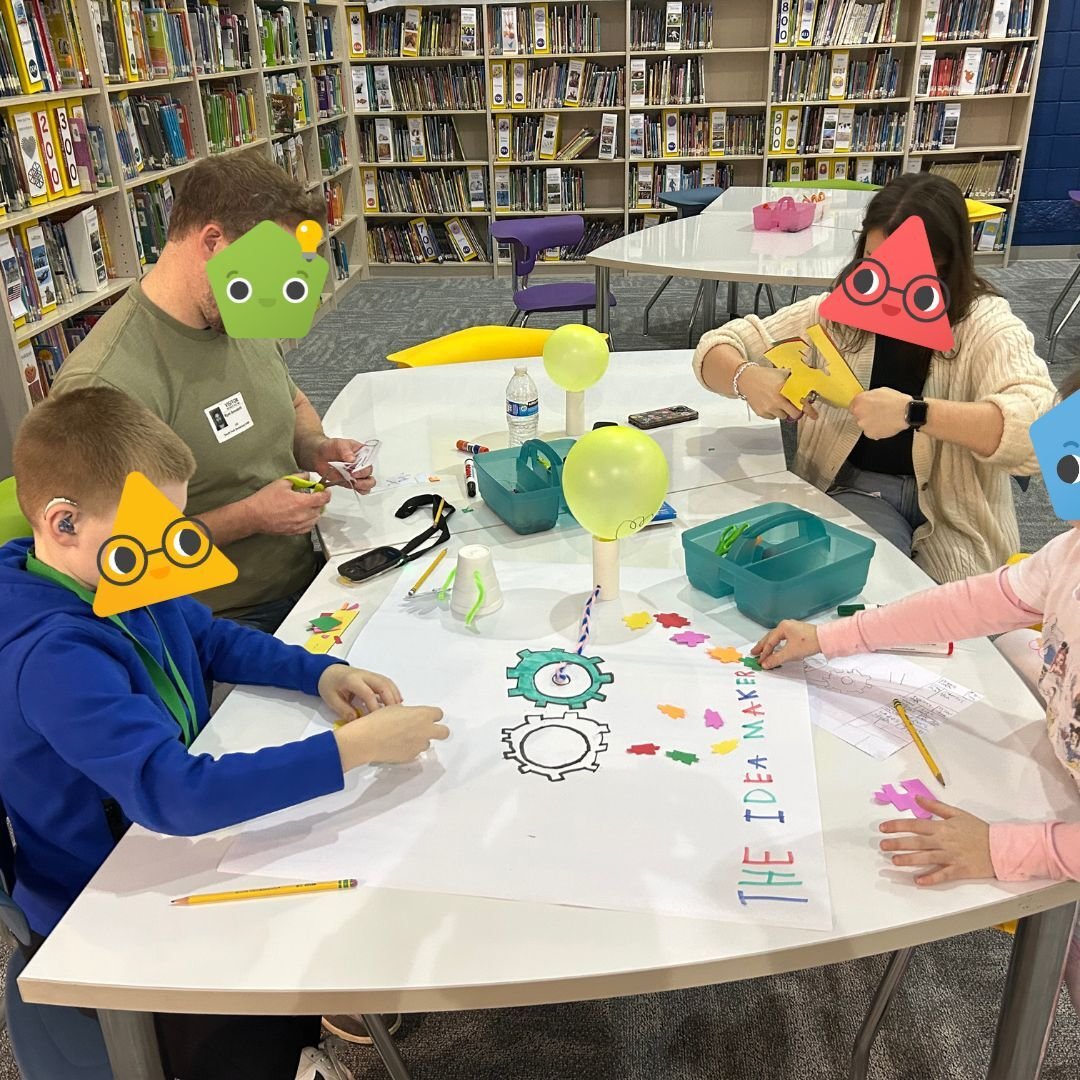
Designing a Meaningful STEM Makerspace
As an Associate Professor at the University of Wisconsin and a makerspace veteran, Peter Wardrip uses Strawbees to empower educators and learners alike.
With its low barrier to entry and high ceiling for creativity, Strawbees fits seamlessly into drop-in makerspaces, professional development sessions, and intergenerational learning environments—helping educators center the learner experience without needing expensive or complex tools.

Peter Wardrip
Associate Professor
University of Wisconsin
Wisconsin
Background
After 12 years of working in education including in the Make Shop at the Children’s Museum of Pittsburgh and is now focusing on teaching college students about maker spaces and how to design professional learning experiences.
After encountering Strawbees in 2019 during a meeting of researchers and maker educators, Strawbees was used to engage participants in hands-on activities. Although it can be scaled up, Peter immediately appreciated how easy it was for educators he worked with to immediately embrace the product.
“Straws are a familiar material that people feel comfortable constructing with. Even though it can take a lot of practice to be able to make a creation that fulfills a particular vision somebody has.”

Implementation
One of the biggest benefits and also challenges that Peter has with makerspaces is that it is a drop in experience. In some ways, this allows educators to showcase a lot of different types of educational opportunities, but in others, it has to be something that speaks for itself.
“It has to be differentiated and be equally engaging for a 3 year-old and an 8 year-old, somebody who’s done the activity before and someone who’s never done the activity. Strawbees are the type of material and tool that lends itself really well to that because it can be guided by a particular prompt.”
Rather than curriculum standing in the way, Peter finds that teachers need the opportunity to play with and be hands-on with materials as it gives them the chance to get ideas by working with the materials. Furthermore, Peter saw the value as a makerspace creator in the reusability.
“Something like a 3D printer doesn’t scale well. There’s the waiting time of printing something up and some of the more heavy duty equipment doesn’t put the learner in the center of the experience. With Strawbees, the learner is the center of the experience and they can create what they want to create.”

Outcomes
After doing a lot of professional development with Strawbees and community facilitated discussions with educators, Peter finds it useful to ask educators to construct a representation of something with Strawbees. Using concepts like “belonging” or “curiosity” helps teachers build something relatively quickly and it unlocks so much more.
“When you construct a representation of an assessment, for example, it sounds crazy but it allows assumptions that people have about assessments to be surfaced and made visual. Then we can talk about it and negotiate with it.”
When implementing a different activity like sewing, Peter finds that because some people can be more experienced with it than others, it can create some anxiety for some people who have never done it before and worried about being compared to the experts in the room, but Strawbees flattens out the expertise field because what people create is not perfect, but can be improved upon. And the responses he usually gets from teachers come in two flavors: “This is amazing” and “Why haven’t I seen this before?”
“I can’t even think of a time where somebody complained about it or anything like that. They always say it’s amazing. I love to see that when somebody’s new to Strawbees they lay out all of the connectors and they’re exploring what the potential is before they even try to construct something.”
Supporting teacher’s real obstacles with time constraints is also something that Peter appreciates. After meeting with a teacher that only has students for 30 minutes once every eight days, they have to decide whether they want to build a one off lesson for the short amount of time or do something over the span of several weeks that students may not understand.
“I think Strawbees lends itself to a short amount of time for engagement. It’s hard to put students in the driver’s seat with big equipment because they might not know how to use it. That takes some extra instructional time which they can do but it is extra.”
The benefit Peter has with maker spaces is that he can design activities that fulfill values that he has such as creativity, collaboration, troubleshooting and problem solving. Supporting students or learners to engage in those values with a host of materials is usually part of his goal in building a space.
“Maybe this is a bias of mine, but I think too often digitally based tools involve having to learn the tool itself as part of the tasks. Materials like Strawbees don’t confuse the educator or the learner. Making something on a 3D printer involves learning how to string up the filament and when there’s such an emphasis on tools, the design kind of gets lost.”
Maker spaces also allow for intergenerational learning which is a gold standard, especially in museums, between caregivers, grandparents and children. Because of Strawbee’s low threshold of adoption, it doesn’t remind other generations of negative school experiences. When he’s seen generations engage with activities like circuit blocks and boards, caregivers might think they need experience with wiring and might feel disengaged.
“Strawbees doesn’t have stereotypes associated with it of what is good and bad like with particular memories from school. I think something like Strawbees works because straws are both familiar and novel. It creates an opportunity for caregivers and children to work together which I think is cool.”


Making Effective Makerspaces
“I think Strawbees lends itself to a short amount of time for engagement. It’s hard to put students in the driver’s seat with big equipment because they might not know how to use it. That takes some extra instructional time which they can do but it is extra.”
Peter Wardrip
Associate Professor, University of Wisconsin, Wisconsin
